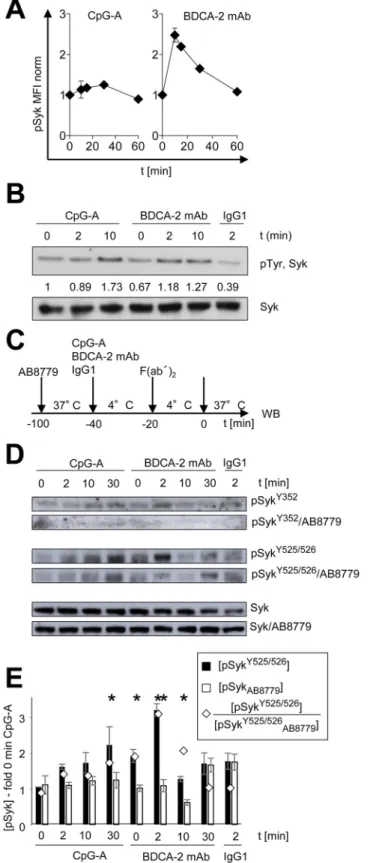Dual Role of the Tyrosine Kinase Syk in Regulation of Toll-Like Receptor Signaling in Plasmacytoid Dendritic Cells
Texte intégral
Figure



Documents relatifs
M ot s- mêlés Amateur Mots-mêlés Connaisseur Mots-mêlés Professionnel Mots-mêlés Expert Mots-mêlés Grand maître Mots-mêlés Copie Amateur Copie Connaisseur Copie
Supplementary Materials: The following are available online at http://www.mdpi.com/2072-6694/11/2/202/s1 , Table S1: Clinical features of neuroblastoma tumors, Table S2: Cell
In the next sections, a step forward in this analysis is carried out by looking at lattice occupancy pro- files and lattice excess adsorption isotherms obtained for the adsorption
TNF- α activates different mitogen-activated pro- tein kinase (MAPK) pathways, Erk1/2 and JNK, which in turn initiate nuclear factor- κB (NF-κB) and activator protein 1
control and showed no staining which ruled out non-specific reactions (A) whereas staining control horse (B, C, E) lungs with anti-TLR4 antibody showed the presence of TLR4 in
In contrast to UbiM and UbiL, our observation that UbiF, UbiH, UbiI, and Coq7 are mostly found in genomes containing three hydroxylase-encoding genes (Fig. 3C) suggests that
The aim of our work was to evaluate the influence of COX on the response of resistance arteries under conditions of regulated flow and pressure, following TP receptor stimulation
We found that CM from PBMCs stimulated with dual-acting TLR7/8 (R848) and TLR2/7 (CL413) agonists were more potent drivers of inhibition of HBe and HBs antigen secretion